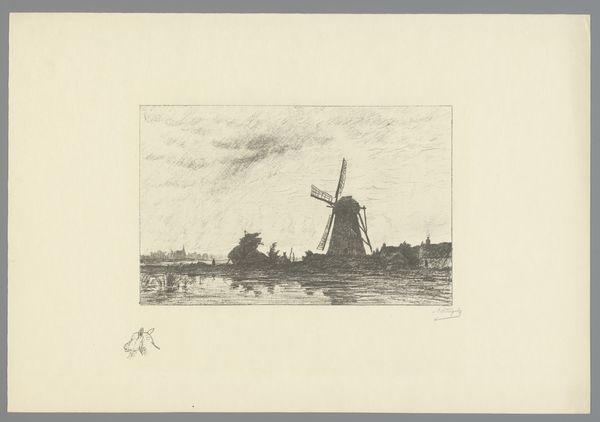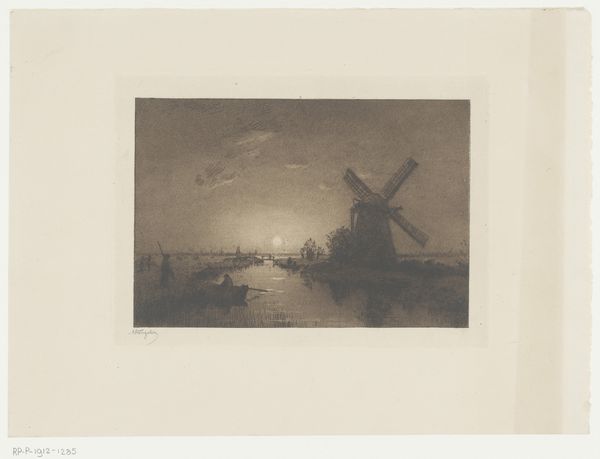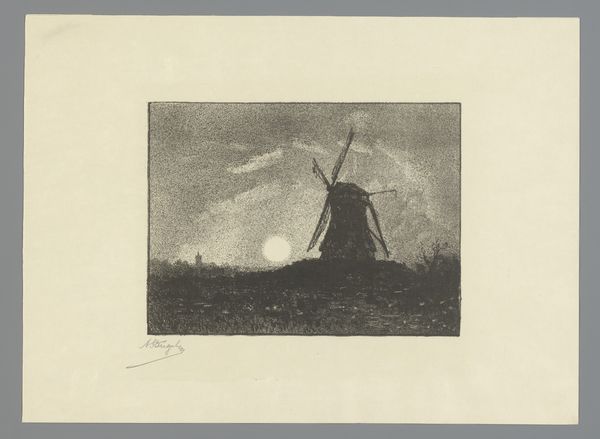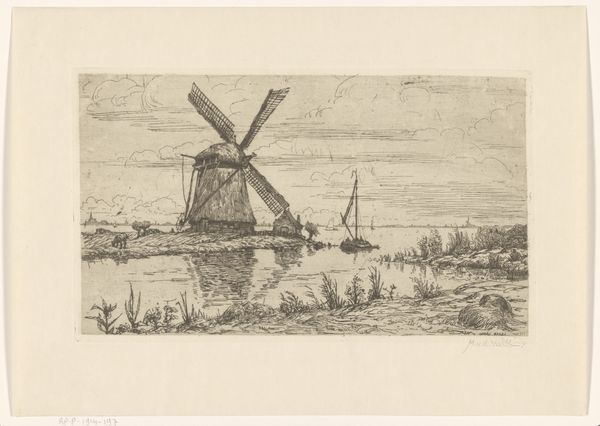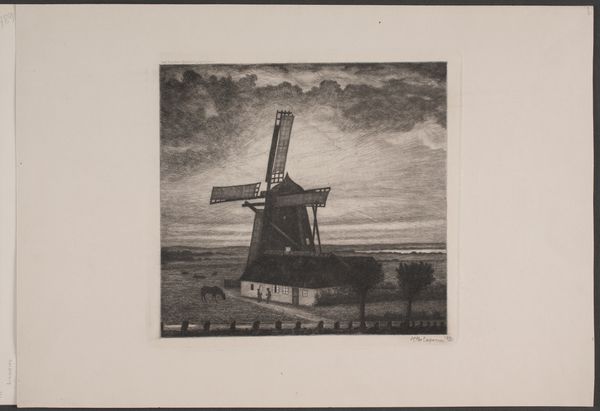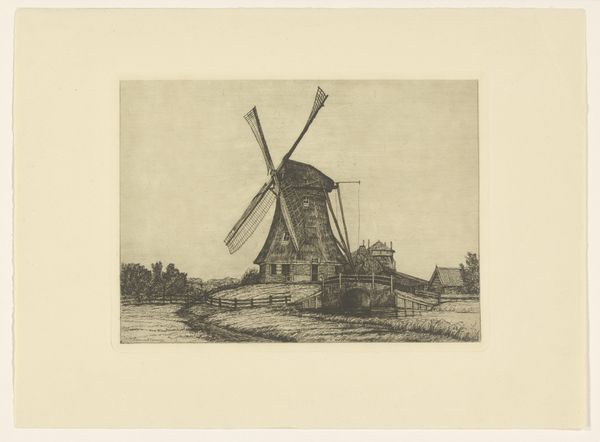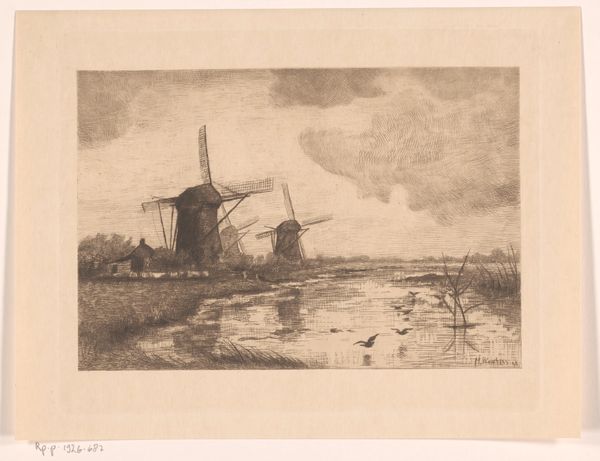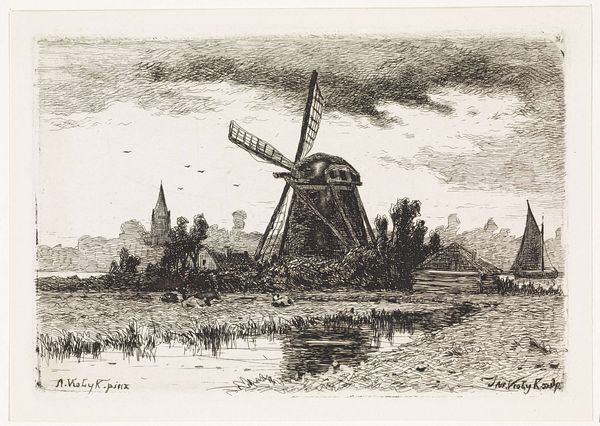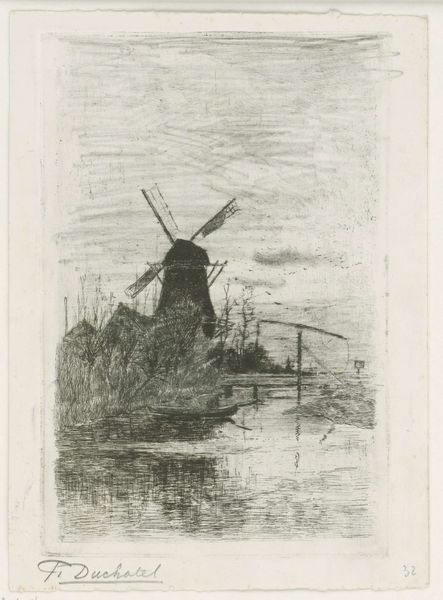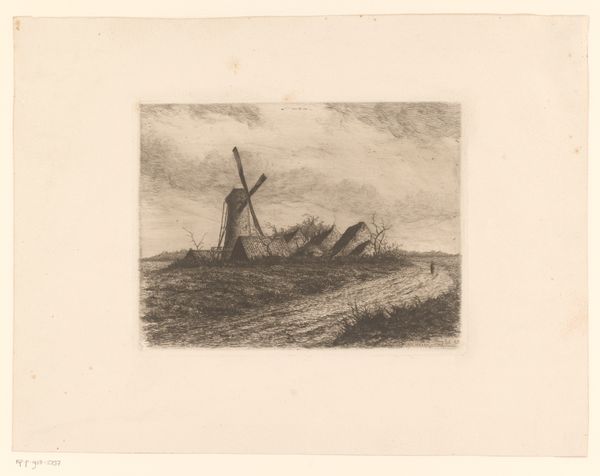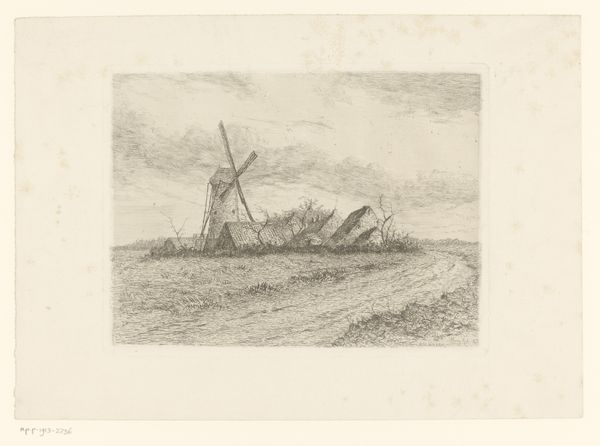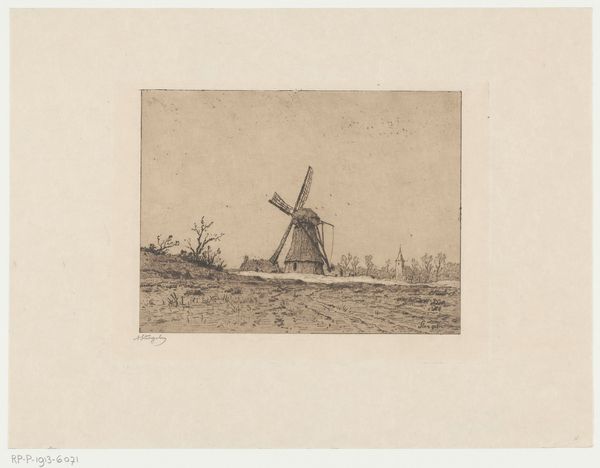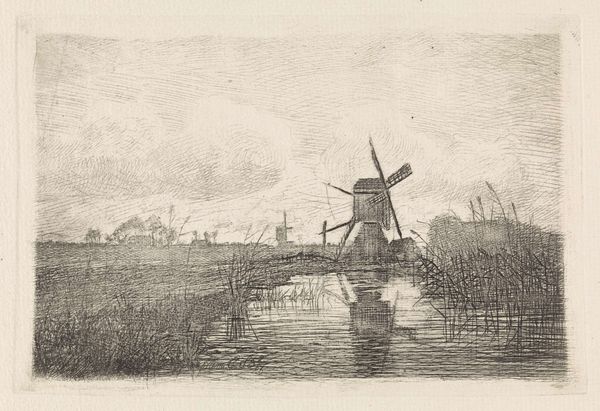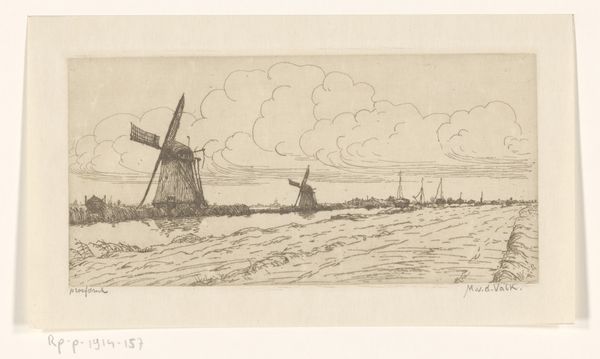
print, engraving
#
dutch-golden-age
# print
#
landscape
#
line
#
engraving
#
realism
Dimensions: height 332 mm, width 505 mm
Copyright: Rijks Museum: Open Domain
Curator: Welcome, everyone. Today we’re looking at “Hollandsch Landschap,” a captivating print, an engraving, created sometime between 1849 and 1895. Editor: It has a very somber feel to it, wouldn't you say? The stark lines and monochromatic palette emphasize the landscape's subdued quality. Curator: Absolutely, and this isn't just any landscape, but a scene infused with Dutch identity and resilience. You're looking at a quintessential image representing the Netherlands’ unique relationship with water. Windmills such as this weren't just picturesque; they were instrumental in land reclamation, helping to drain marshes and create arable land. They represented a society working tirelessly to shape their environment. Editor: From a formal perspective, I’m fascinated by the strong diagonal formed by the windmill’s arms, how they almost slice through the composition, counterbalanced by the horizontal plane of the land and water. It's all about contrasts. Curator: And that contrast plays into the complex historical narratives. This image was made at a time of growing national pride but also rapid industrialisation. So, you have this nostalgic portrayal of a rural, pre-industrial landscape, perhaps serving as a visual anchor to a perceived simpler past amidst social changes. Editor: I agree, and look how the linear quality of the engraving mimics the methodical process of land management—each line as precise and calculated as the engineering that went into building the dikes. Curator: It also hints at class dynamics and land ownership. Who benefited from this ‘conquest’ of nature, and at what cost to the natural environment? And in which ways would landscape views exclude lower-class farmers, landless workers, and women. Editor: Very insightful. Shifting to the technical execution, I think that the fine lines used in the engraving really create depth. There is something appealing in its texture that enlivens this scene. Curator: These rural images reinforced ideas about national character but also obscured the complex realities behind those constructions. It represents a nation building an idealized image. Editor: I never would have considered all those meanings simply by looking at it. Thanks to that, I leave having a much richer understanding of this quiet image. Curator: Likewise; this print, ostensibly a simple landscape, becomes a mirror reflecting historical power relations. Thank you for joining us.
Comments
No comments
Be the first to comment and join the conversation on the ultimate creative platform.
